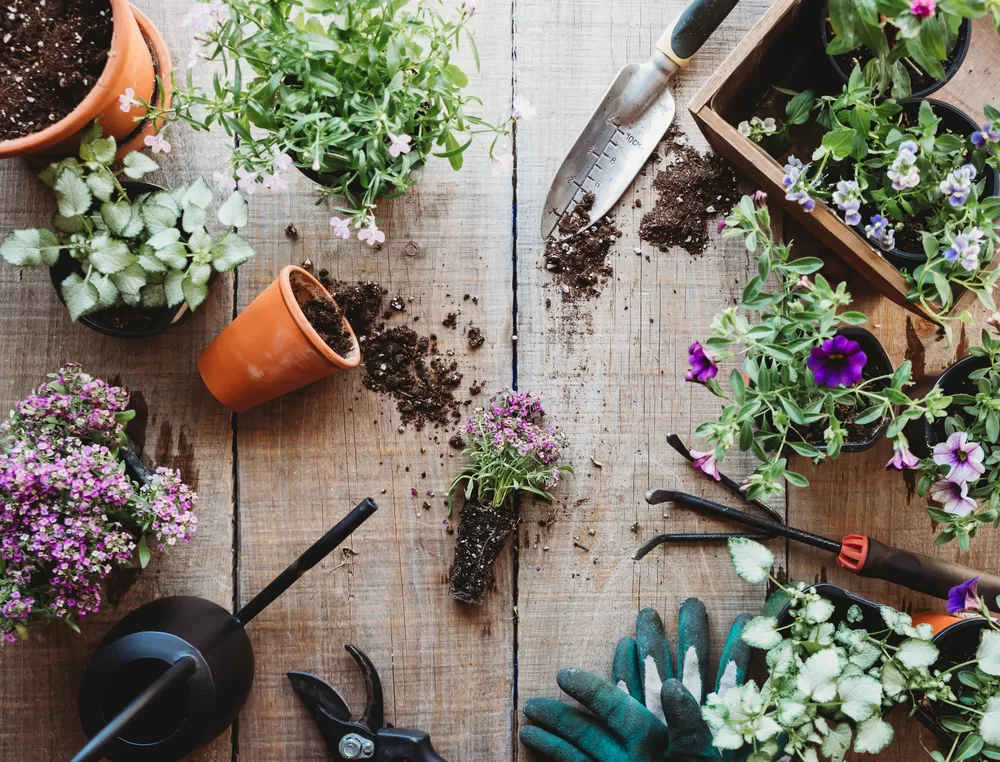Succession Gardening
Most of us live in places where we can’t garden year round, but there are a lot of tips and tricks to extend the growing season, and succession gardening is one of my favorite.
Succession gardening is not just a method; it’s a symphony orchestrated by the changing seasons. The concept involves strategically planning and planting crops in sequence, ensuring a seamless transition from one growing season to the next. According to data from the United States Department of Agriculture (USDA), farms employing succession planting techniques report increased yields by 20-30% compared to traditional planting methods. And who doesn’t want more fruit and veggies, amirite?
The key lies in understanding the life cycles of different crops and tailoring their planting schedules to optimize space, resources, and time. Let’s dive into the seasonal acts of this organic ballet.
Spring Awakening
In the early chapters of our gardening drama, spring takes center stage. This act, marked by the retreat of frost, sees the rise of cold-tolerant crops. According to research published in the Journal of Agricultural Science, planting cold-resistant vegetables early in the spring extends the growing season, resulting in higher yields.
Spinach, kale, radishes, and peas become the prima donnas of this act. The USDA Plant Hardiness Zone Map serves as your guide, indicating the safe times for planting. As temperatures rise, these resilient performers set the tone for the verdant spectacle that follows.
Summer is Here!
As the sun climbs higher, Act 2 unfolds with the entrance of warm-season stars like tomatoes, peppers, and cucumbers. Timing is critical in this act, and staggering the planting of these crops prolongs the harvest. The Journal of Horticultural Science emphasizes that well-timed plantings ensure a steady supply of fresh produce, making your garden a cornucopia of flavors.
Mulching, as suggested by studies in the Journal of Plant Nutrition and Soil Science, becomes a vital tool during this act. Mulch regulates soil temperature, conserves moisture, and suppresses weeds, creating optimal conditions for the summer cast to flourish.
The Autumn Sonata
As summer wanes, Act 3 ushers in the cool-season encore. This is the time for crops like carrots, beets, and lettuces to shine. Research from the Journal of Sustainable Agriculture reveals that planting these vegetables in late summer allows them to mature in the cooler temperatures of fall, enhancing both flavor and nutritional content.
In this act, the interplay between crop rotation and succession gardening becomes apparent. The Journal of Crop Production indicates that rotating crops helps prevent soil-borne diseases and enhances overall soil health. It’s a dynamic choreography that keeps the soil fertile and the audience – or rather, the gardener – captivated.
Intermission: Winter Gardening
Winter serves as the intermission, a time for the garden to rest and rejuvenate. Enter cover crops – the unsung heroes of soil health. Studies in the Journal of Soil and Water Conservation underline their significance in preventing erosion, suppressing weeds, and enriching the soil with organic matter.
Clover, winter rye, and hairy vetch take center stage during this period, their presence ensuring that the garden’s soil is a fertile canvas awaiting the next act. This intermission is not just a break but a critical phase in preparing for the upcoming growing season.
Crop Rotation
As the gardener, you play the role of choreographer, ensuring a seamless transition between acts. Crop rotation becomes your dance routine, moving different plant families into designated areas each season. The Journal of Crop Production states that this practice disrupts the life cycles of pests and diseases, reducing the need for chemical interventions.
It’s a strategic move that minimizes soil fatigue, balances nutrient levels, and optimizes the overall health of the garden. Crop rotation is not just a dance; it’s a science-backed strategy that keeps the garden vibrant and resilient.
Now, different gardeners use different methods. The Spruce lists four different types of succession gardening.
Tools of the trade
Every gardener needs a set of reliable tools, and in the realm of succession gardening, these tools become essential:
- Row Covers and Cold Frames: Shields that protect delicate seedlings from unexpected frosts, ensuring a strong start for each act.
- Mulch: The multitasking performer that regulates soil temperature, conserves moisture, and suppresses weeds, contributing to the success of every act.
- Compost: The organic script that keeps the soil fertile and teeming with beneficial microorganisms, essential for the overall health of the garden.
- Quality Seeds: The lead actors that determine the success of each act. Investing in high-quality seeds ensures a bountiful and flavorful harvest.
Section 8: The Finale – Harvesting the Symphony of Bounty
As the organic ballet unfolds, the grand finale is the harvest. Research from the Journal of Agriculture and Food Chemistry underscores the importance of timing in harvesting. Picking fruits and vegetables at their peak ripeness ensures optimal nutrient content and flavor, delivering a satisfying conclusion to the gardening spectacle.
The finale is not just a culmination but a prelude to the next season’s production. The gardener, having played the role of director and choreographer, watches with pride as the garden’s symphony echoes through the changing seasons.
In the world of succession gardening, the cycle continues – a perpetual dance of sowing, growing, and harvesting. Armed with the knowledge of optimal timing, strategic planning, and a dash of organic wisdom, the gardener becomes the maestro of a thriving organic orchestra. May your garden dance to the tunes of succession, creating a symphony of abundance and flavor.

